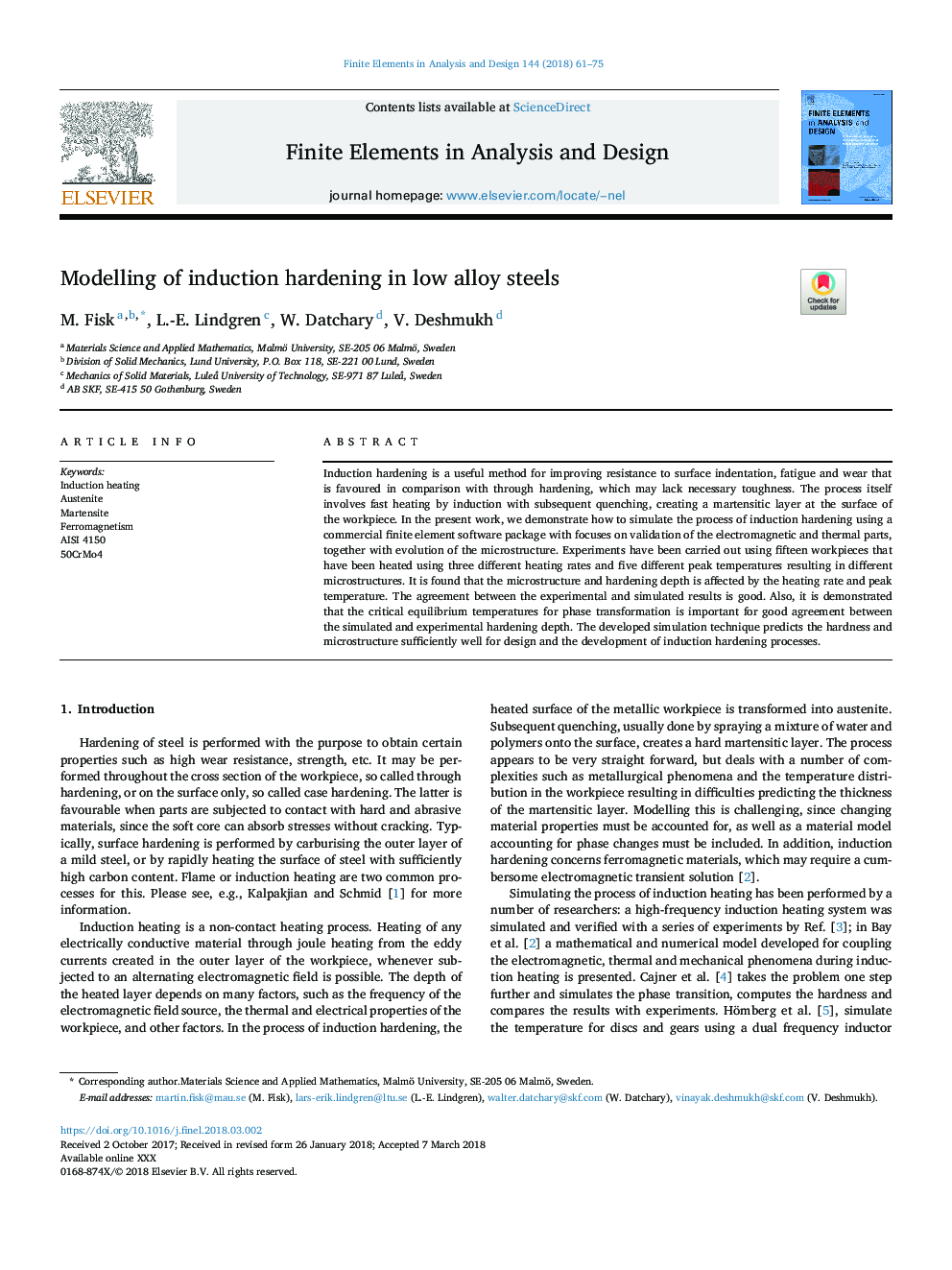| Article ID | Journal | Published Year | Pages | File Type |
|---|---|---|---|---|
| 6925357 | Finite Elements in Analysis and Design | 2018 | 15 Pages |
Abstract
Induction hardening is a useful method for improving resistance to surface indentation, fatigue and wear that is favoured in comparison with through hardening, which may lack necessary toughness. The process itself involves fast heating by induction with subsequent quenching, creating a martensitic layer at the surface of the workpiece. In the present work, we demonstrate how to simulate the process of induction hardening using a commercial finite element software package with focuses on validation of the electromagnetic and thermal parts, together with evolution of the microstructure. Experiments have been carried out using fifteen workpieces that have been heated using three different heating rates and five different peak temperatures resulting in different microstructures. It is found that the microstructure and hardening depth is affected by the heating rate and peak temperature. The agreement between the experimental and simulated results is good. Also, it is demonstrated that the critical equilibrium temperatures for phase transformation is important for good agreement between the simulated and experimental hardening depth. The developed simulation technique predicts the hardness and microstructure sufficiently well for design and the development of induction hardening processes.
Related Topics
Physical Sciences and Engineering
Computer Science
Computer Science Applications
Authors
M. Fisk, L.-E. Lindgren, W. Datchary, V. Deshmukh,
